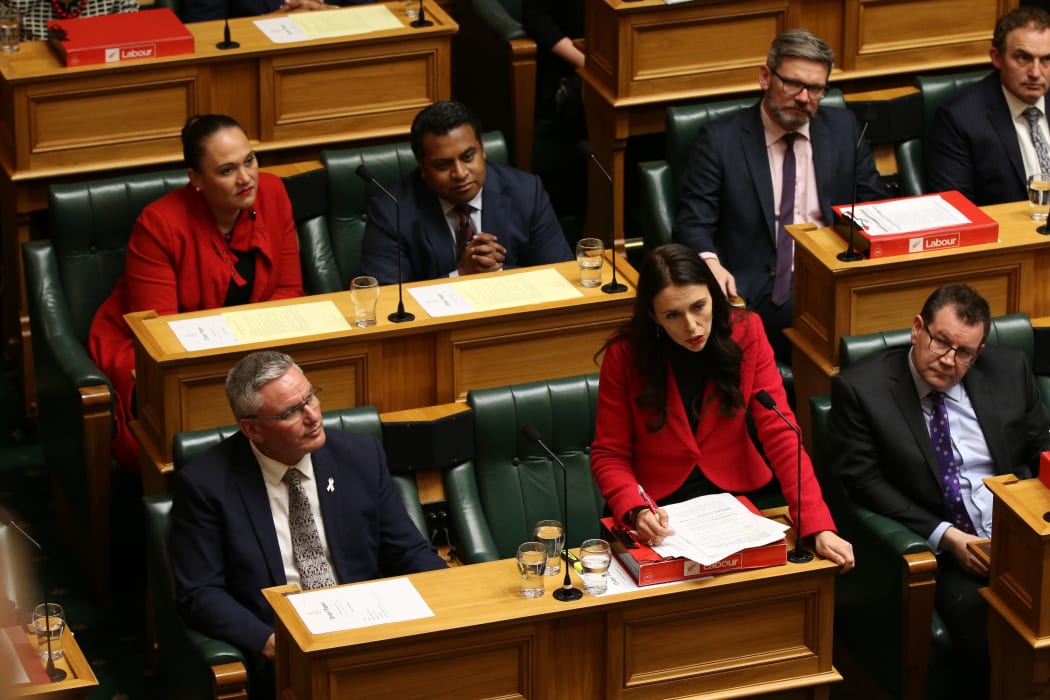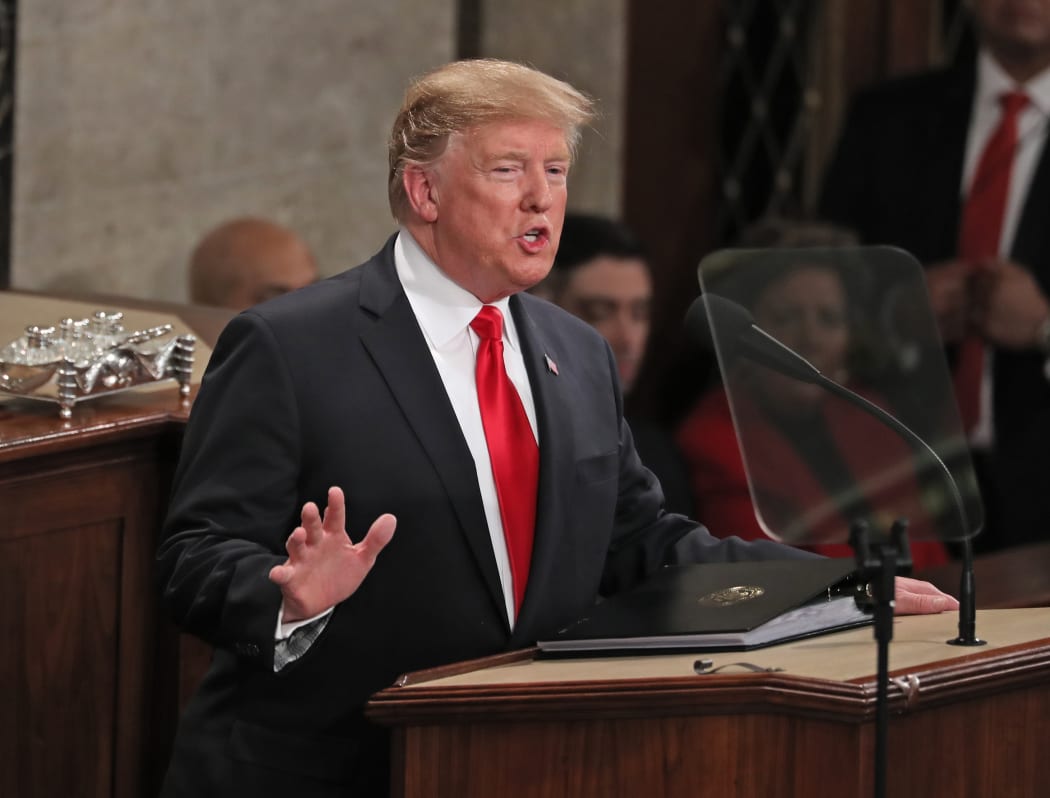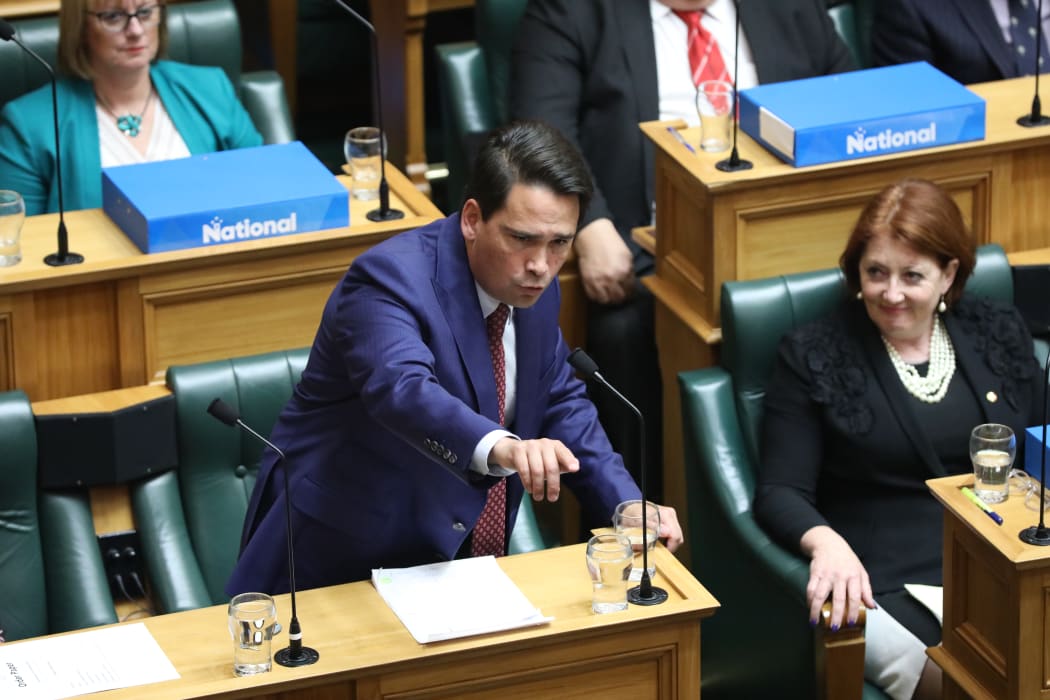Last week the US president delivered the annual State of the Union address to Congress. This week is New Zealand’s turn.
The kick-off to the Parliamentary year is a set-piece tomorrow called the Prime Minister’s Statement. It’s like the State of the Union, but better.
Our version has major differences, not counting it will almost certainly be more coherent than last week’s.

The Prime Minister, Jacinda Ardern. Not just an occasional visitor to the legislature. Photo: VNP / Phil Smith
Both are occasions when the leader of the executive branch of government turns up to face the members of the legislative branch. One difference is that in the US that happens once a year, while in New Zealand it happens most of the days Parliament sits.
Both are occasions where the executive branch outlines some of their hopes and plans for the coming year. The difference is that in the US those plans are often pipe dreams (because the President’s party seldom controls all of Congress and the Executive doesn’t direct the legislative agenda.) Meanwhile in New Zealand anything the Prime Minister announces is very likely to happen because they also direct the legislature’s agenda.
Both New Zealand and the US have three branches of government; the executive, the legislature, and the judiciary.
In New Zealand (except to launch a new government), the only officials who attend are the first two branches of government. In the US, leaders of the third branch (the judiciary) also attend. So do the heads of the various armed forces (the joint chiefs, who aren’t a branch of government, Eisenhower notwithstanding).
But the biggest difference of all is what happens next, what happens afterwards. This is the crunchy bit. This is where New Zealand has it all over the US.
In the US the president turns up, delivers a long speech (about an hour) and leaves. That’s it.

President Trump delivering the 2019 State of the Union, where opposition doesn't go much beyond not clapping. Photo: AFP
In recent years the opposition party has organised someone to deliver a ‘response’, but the President and the audience has all long gone home. The response speech doesn’t even happen in Congress, and isn't given by anyone of great note. There is no ‘leader of the opposition’ in the US system.
By contrast in New Zealand the Prime Minister gets a tight 20 minutes. Then the PM sits down and has to listen to the Leader of the Opposition for 20 minutes argue that the government is feckless, pathetic and failing.
Then the leaders of the other parties get a shot each for twenty minutes (10 for ACT). And on it goes, with a to-and-fro across the chamber about whose plan is great and who is rubbish, for a full 13 hours. Thirteen hours.

Simon Bridges lays into the Government during a recent general debate Photo: VNP / Phil Smith
Because when your executive branch is a subset of your legislative branch, there is no hiding at home, enjoying ‘executive time’ and taking pot shots over social media.
The New Zealand Executive has to front-up, make your case, and face the music on a regular basis; the debate on the Prime Minister’s Statement is just the first of the year.
The biggest difference of all though, is that if New Zealand's legislature doesn't like what they hear from their leader they can toss her out on the spot. The Debate on the Prime Minister's Statement is a 'confidence vote', meaning if the Government lose it they are out of office. If the US congress could do that, the State of the Union address might be a very different animal.


